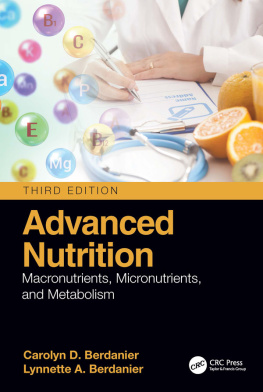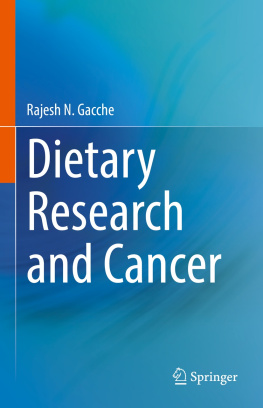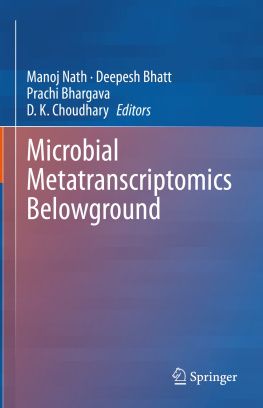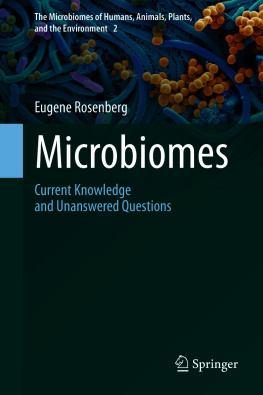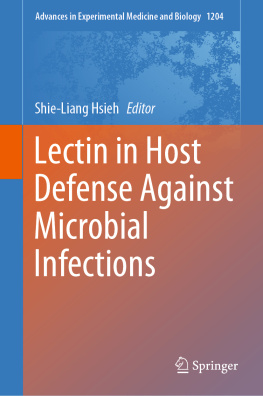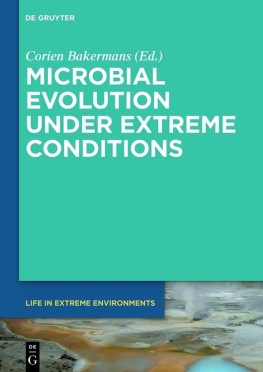CHAPTER 1
Introduction and Background to Microbiome Research
Joseph F. Pierre*
Department of Nutritional Sciences, College of Agriculture and Life Science, University of WisconsinMadison, Wisconsin, USA,
*E-mail:
1.1 Introduction to the Gut Microbiota
Microbial communities colonize the gut and virtually all other body compartments, including the skin, mammary ducts, respiratory tract, and, as recent evidence supports, even the circulation. These dynamic communities are fundamentally involved in homeostasis and disease progression under environmentally and genetically shaped susceptible conditions. Through their assistance with digestion and fermentation, stimulation of nutrient absorption and endocrine regulation, production of vitamins, priming and agonism of immune education and response, and production of many small molecules, a growing number of relevant hostmicrobial interactions have been uncovered rapidly by microbiome researchers in recent years. Despite the enormous effect microbiome research has already had on our understanding of health and many diseases, this field is still young and continues to evolve in both the amount of empirical data collected annually and through the continuous improvements in the methodological approaches and techniques used to explore the microbiome.
Scientists had historically long attempted to investigate microorganisms, but for hundreds of years the investigation into microbial Koch subsequently developed criteria, termed Koch's postulates, for the empirical determination for the role of bacteria in disease aetiology. These postulates included the necessity to isolate suspected bacteria in all cases of a specific disease (but not from healthy individuals), successfully initiation of disease when that isolated microbe was introduced to a healthy host, and subsequent resolution of disease when that suspected microbe was eliminated.
It is now apparent that the majority of microbes that live within us are not readily grown in traditional laboratory media, instead requiring unique energetic substrates, the presence or absence of specific atmospheric gases, or specific mutualistic or even parasitic interactions with other unique members of the gut community and their metabolites to thrive. These initial challenges led to the rise of culture independent methods, including next-generation sequencing, that allowed full ecological characterization of isolated microbial DNA. Much of this early research has been around metabolism and nutrition. The enormous genetic capacity harboured by gut microbes has led to the concept that the microbiome is a virtual mammalian organ, being shaped by other host homeostatic and immune systems, and one that can subsequently be transplanted in composition and function between hosts with variable degrees of success. Microbiome research over the past two decades has done much to shift the viewpoint of our microbes towards them being helpful participants in normal development, homeostasis, and nutrition, revising an outdated concept of microbes as simply harmful pathogens and disease-causing organisms.
1.2 Approaches in Microbiome Research
In order to determine community membership, along with functional characteristics of the microbial community, a number of technologies can be used either independently or in parallel as multi-omics-based platforms. These technologies enabled culture-independent (next-generation sequencing) or culture-dependent approaches (anaerobic chambers, fermentation cultivar systems) to identify and isolate novel microbial strains that may contribute individually or as keystone community members of broader ecology in response to various perturbations, and in particular, nutrition. The following sections outline tools and techniques used in microbiome research to explore and elucidate the effects of and interplay between nutrition and dietary intake on gut microbes.
1.2.1 Fingerprinting the Microbial Community
1.2.1.1 Microbial Gene Amplicon Sequencing Techniques
The identification and use of highly conserved regions of prokaryotic rRNA found in all bacteria and fungi enabled amplification-based sequencing approaches. Amplicons are generally 150 to 250 nucleic acid base pairs in length. Studies examining humans and animals routinely rely on the 16S rRNA marker gene amplicon sequencing platforms, which include Sanger-based sequencing, Roches454, PacBio, IonTorrent, and Illumina MiSeq/HiSeq/NexSeq platforms. Each technique enables insight into microbial community composition, community diversity, and numerous methods to determine relatedness and unique signatures of microbial communities. Dependence on 16S rRNA amplicon sequencing inherently targets bacteria, which are the predominant colonizers, making up roughly 99% of microbial cell numbers, but are not the only kingdom of microorganisms, fungi and yeasts, viruses, and protists are excluded.
Advancements of rRNA amplicon sequencing approaches have recently been developed to target other kingdoms and domains, including yeasts, and are more commonly being used to study human and animal health and disease. The importance of these communities remains debated, as compared with bacterial communities that remain relatively stable within individuals, These analyses are complicated by the number of environmental and dietary ingested yeast and fungal species that may be transient and limit detection of true colonizers in individuals.
To address these challenges, additional rRNA regions, such as the 18S rRNA subunit and the internal transcribed spacer 1 and 2 (ITS1 and ITS2) are used for phylogenetic assignment of eukaryotic microorganisms, specifically yeast and fungi. Accordingly, greater resolution of bacterial and other rare microbial members and their role in gut ecological dynamics is needed to understand the interactions between prokaryotes and eukaryotes and their synergistic function in influencing host homeostasis. These advances will probably come through synergy in deeper sequencing, further database curation, and increased sequencing coverage that will enable a more comprehensive snapshot of the complex inter-kingdom colonizing populations.
1.2.1.2 Transfer RNA (tRNA) Sequencing (seq) Techniques
Beyond 16S rRNA amplicon sequencing for microbial community fingerprinting, recent advances in microbially-derived transfer RNAs (tRNAs) that facilitate translation of messenger RNA protein are also used to distinguish microbial communities with high accuracy. This method was originally developed for isolated microbial cultures but was then coupled with enzyme treatment to analyse demethylated tRNA, allowing insights into both tRNA transcripts and tRNA post-translational modifications. provides an opportunity to obtain more advanced functional insights, especially in the context of investigating the role of nutrition and dietary interactions with microbial functions.
1.2.2 Identification and Classification of Microbial Membership and Their Functions
1.2.2.1 Sequence-based Approaches
1.2.2.1.1 Shotgun Metagenomics.
The limitations of amplicon-based tools (16S, 18S, ITS rRNA) can be more readily overcome through the use of high-throughput shotgun metagenomic sequencing since this method provides untargeted collection of all genetic content isolated in a microbial sample. These approaches are also valuable because they include genetic capture of fungal, virus and bacteriophage, in addition to bacterial, genomes. To date, two general approaches are used: mapping to reference databases or de novo assembly of sequenced reads. For sequence mapping purposes, on-line servers are available, including Metagenomic Rapid Annotations using Subsystems Technology (MG-RAST) 16S based inferences as a stand-alone.
Next page

